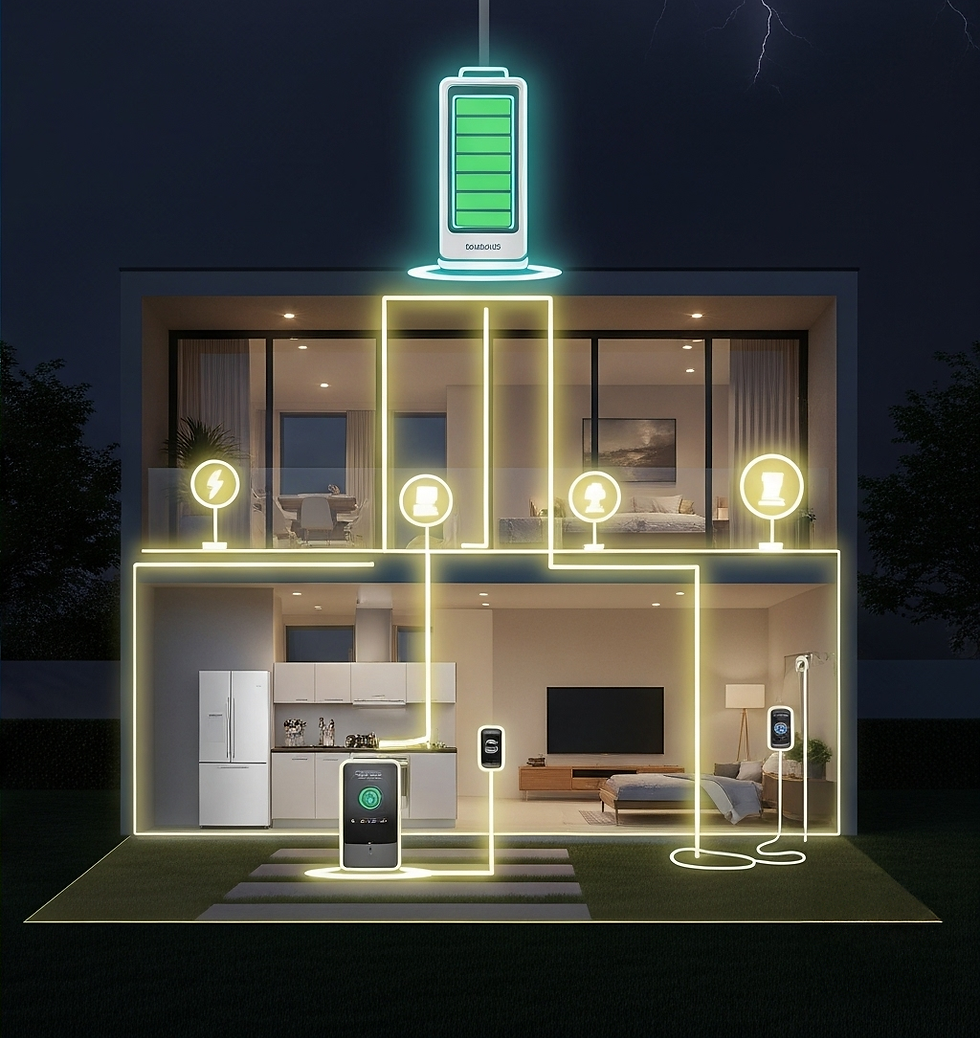What Size Solar Battery Do I Need?
- HH L
- Sep 9
- 2 min read
Updated: Sep 14

In one minute to know: What Size Solar Battery Do I Need?
Most Aussie homes land between 7–13 kWh of usable storage. Start by listing your blackout must-haves (fridge, Wi-Fi, lights), add a few “nice-to-haves,” then check your evening usage. Match your needs to a battery size that covers both your bills and outage goals.
Step 1: List your essentials (blackout must-haves)
The critical loads you want alive during an outage, typically:
Fridge/Freezer ❄ — ~100–200 W while running
Wi-Fi + a few lights ᯤ — ~100 W combined
Garage door / TV / PC ☐ — occasional short bursts
Covering these essentials first drives your system design and inverter choice.
Step 2: Add “nice-to-haves”
Be honest about what you’ll really use in a blackout:
Everyday extras — TV, PC, microwave
Heavy loads — ducted air-con, hot water, electric shower (these usually need whole-home backup and a larger inverter)
Runtime examples for 7, 10 and 13 kWh (idealised)
7 kWh (Compact) — entry-level backup
10 kWh (Popular) — covers most homes
13 kWh (Extended) — for longer outages or higher evening use
Runtime examples:
Scenario | Approx. load | 7 kWh | 10 kWh | 13 kWh |
Essentials only | ~0.25 kW | ~28 h | ~40 h | ~52 h |
Essentials + TV/PC | ~0.5 kW | ~14 h | ~20 h | ~26 h |
Essentials + more | ~0.75 kW | ~9 h | ~13 h | ~17 |
3 rules of thumb
1 Start with essentials
Add comfort once critical loads are covered.
2 Check your evening peak
Cooking, hot water and heating/cooling can spike usage.
3 Bigger solar ⇒ more battery value
More daytime surplus improves utilisation.
When comparing quotes, insist on apples-to-apples: usable kWh (not just nominal), backup output (kW) continuous vs surge, official inverter compatibility, and written inclusions (switchboard works, brackets, bollard, weatherproofing).



Comments